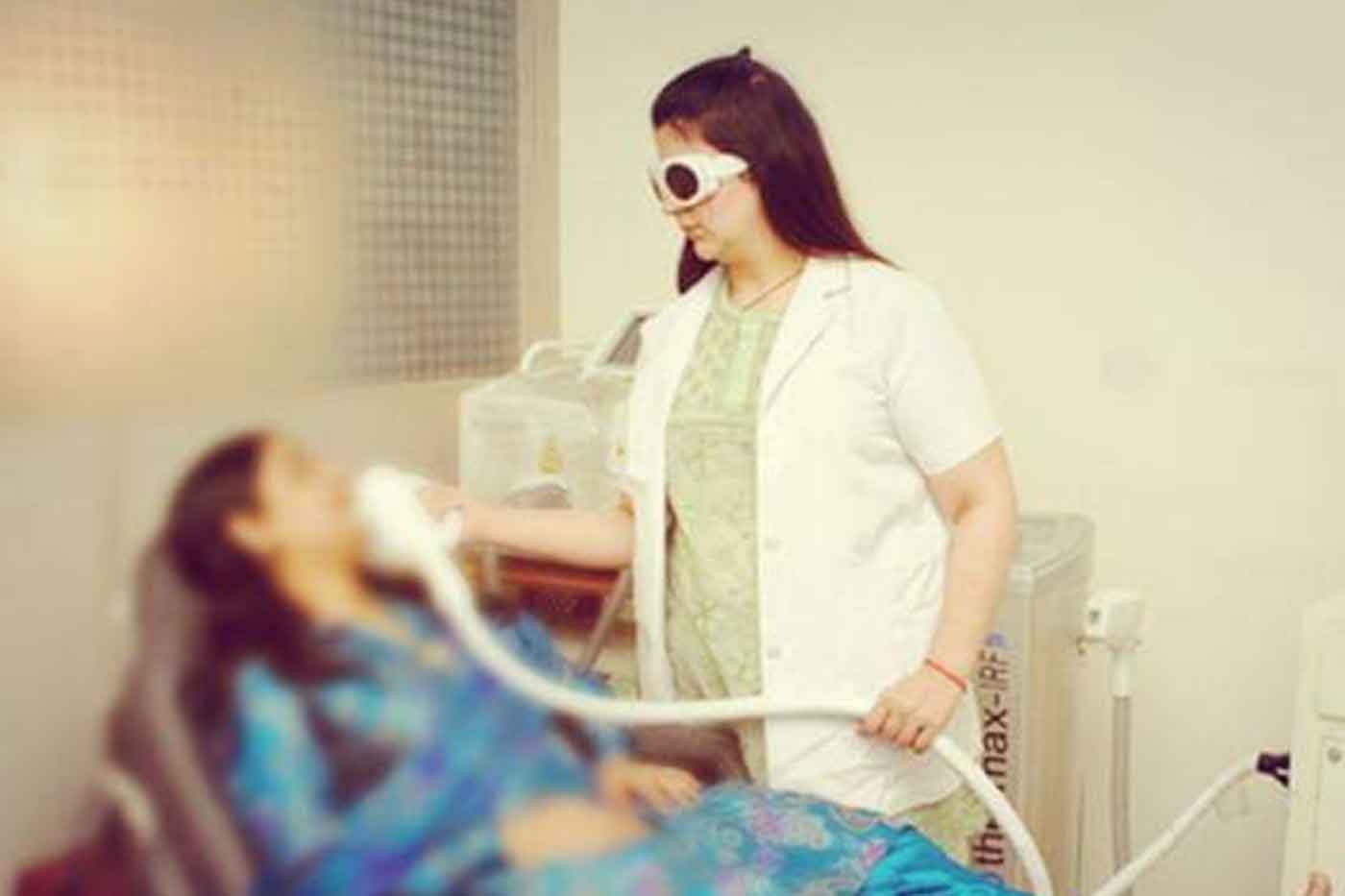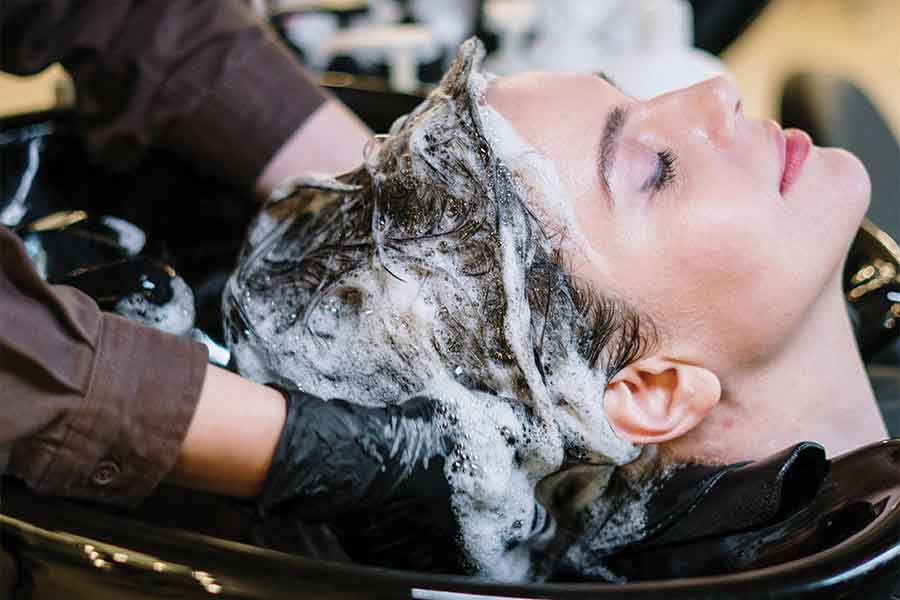Red and Blue LED Light Therapy is a non-invasive therapy that addresses skin issues and also improves its health
KLED Light Therapy uses skin-safe low-level light like blue, red, green, and amber that has various benefits on the skin. So, what is this all about? Experts divulge the details.
Understanding LED light therapy
LED light therapy helps treat a variety of skin concerns and conditions, including eczema, hair loss, psoriasis, mild acne, rough, scaly precancerous skin (actinic keratosis), rosacea, sun damage, wounds, wrinkles. In some cases, LED light therapy may treat small and superficial Basal Cell Carcinoma (BCC).  Dr. Uday Kumar Sonnapa, Consultant- Dermatologist & Cosmetologist, Belenus Champion Hospital, Sarjapur-Bangalore says, “LED therapy is a non-invasive treatment that enters the skin’s layers to improve the skin. While this therapy can be used on any part of the body, it is usually done on the face as this is the part that is usually exposed compared to other body parts. It is usually also used in the neck and chest areas to remove signs of aging.” Post LED Light Therapy, red light helps the skin absorb creams and serums. Therefore, it is recommended to use products that contain peptides, retinol, Vitamin C and apply anti-aging products and serums that contain peptides, retinol, and Vitamin C after the therapy.
Dr. Uday Kumar Sonnapa, Consultant- Dermatologist & Cosmetologist, Belenus Champion Hospital, Sarjapur-Bangalore says, “LED therapy is a non-invasive treatment that enters the skin’s layers to improve the skin. While this therapy can be used on any part of the body, it is usually done on the face as this is the part that is usually exposed compared to other body parts. It is usually also used in the neck and chest areas to remove signs of aging.” Post LED Light Therapy, red light helps the skin absorb creams and serums. Therefore, it is recommended to use products that contain peptides, retinol, Vitamin C and apply anti-aging products and serums that contain peptides, retinol, and Vitamin C after the therapy.
Red light Versus Blue light
Red light penetrates deeper into the skin and has a whole lot of benefits whereas the Blue light acts only on the uppermost layers of the skin. “Blue light can kill acne-causing bacteria and regulate sebum, leading to reduction in acne. On the other hand, Red light can stimulate fibroblasts to make collagen, tighten skin, reduce wrinkles, and fine lines, making skin softer and smoother. It can also help in healing wounds, stimulate hair growth, reduce redness and inflammation in psoriasis. The combination of red and blue light therapy can take care of skin concerns like sun damage, fine lines, wrinkles and is effective in treating acne,” says  Dr. Batul Patel, Leading Celebrity Dermatologist, Founder & Medical Director of The Bombay Skin Clinic.
Dr. Batul Patel, Leading Celebrity Dermatologist, Founder & Medical Director of The Bombay Skin Clinic.
Factors to keep in mind for optimum benefits
Harnessing the cell-stimulating and anti-inflammatory effects of red, blue, and NIR wavelengths together, along with the collagen-boosting effects of red/near-infrared light therapy can lead to incredible results.  Dr. Akriti Gupta, Cosmetic Dermatologist, Jivisha Clinic, New Delhi adds, “To attain the best rehabilitation outcomes, I firmly believe that photobiomodulation should be used in every
Dr. Akriti Gupta, Cosmetic Dermatologist, Jivisha Clinic, New Delhi adds, “To attain the best rehabilitation outcomes, I firmly believe that photobiomodulation should be used in every
 Dr. Navnit Haror, Founder-Director of Derma Miracle Skin and Hair Transplant Clinic, Delhi adds, “LED light therapy is not appropriate for everyone, including people who take certain medications that increase their sensitivity to sunlight, and those with a history of certain conditions and eye diseases.
Dr. Navnit Haror, Founder-Director of Derma Miracle Skin and Hair Transplant Clinic, Delhi adds, “LED light therapy is not appropriate for everyone, including people who take certain medications that increase their sensitivity to sunlight, and those with a history of certain conditions and eye diseases.
Safety Cues
LED light therapy does not contain UV rays, and hence, is safe for the skin. However, if you are using medicines that make you more sensitive to light, it is not advisable to undergo this therapy.
 “A point worth mentioning is that you should think about seeing a dermatologist or a certified aesthetic physician before undergoing LED light treatment at a spa or purchasing an at-home gadget. In this manner, your skin problem can be properly diagnosed and treated. For instance, what appears to be aged, imperfect skin may be skin cancer,” says Dr. Karuna Malhotra.
“A point worth mentioning is that you should think about seeing a dermatologist or a certified aesthetic physician before undergoing LED light treatment at a spa or purchasing an at-home gadget. In this manner, your skin problem can be properly diagnosed and treated. For instance, what appears to be aged, imperfect skin may be skin cancer,” says Dr. Karuna Malhotra.
Wear protective goggles so that the light does not cause any damage to the eyes. The treatment usually lasts about 20 minutes. LED light therapy is a non-invasive, painless treatment which should be done in consultation with a dermatologist and under proper supervision. Also, it is vital that you follow the schedule and complete the course to achieve maximum benefits.

Tips
- Perform your skin care routine as usual in the days leading up to your appointment.
- Avoid exfoliating your skin or sun exposure that may irritate your skin.
- Clean your skin with a gentle cleanser before treatment to remove any creams and makeup.
- Sunscreen will block the light waves and hence, should be removed before therapy.







